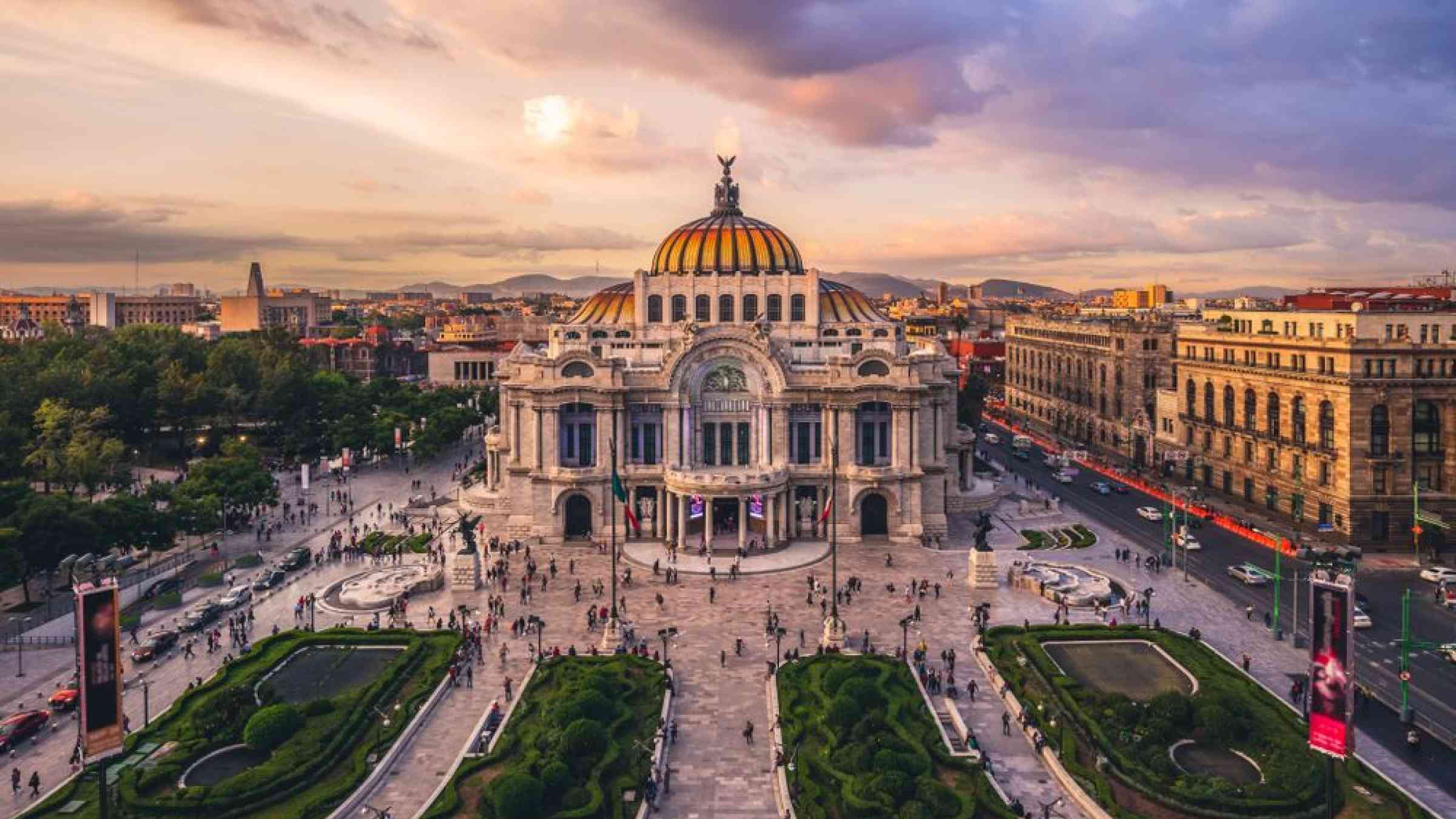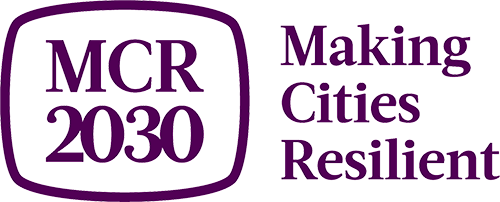México city: inspiring leadership for urban resilience development in Latin America

Mexico City not only faces the challenge of responding to a diversity of current environmental issues, but also must deal with the fact that it is part of a broader ecosystem that includes the 16 municipalities of Mexico City, 59 municipalities of the State of Mexico and one municipality of the State of Hidalgo, which together make up the Metropolitan Zone of the Valley of Mexico (ZMVM), bringing together nearly 22 million people and producing 9% of national greenhouse gases emissions.
From the foundation of the great Tenochtitlan to the present day, Mexico City has a long history of risk creation, derived from an urbanization process with little understanding of the systemic relationship between the natural and the socially constructed, which has turned this city into a multi-threat one. Today, the most relevant risk factors in the city have to do with seismic events and the increase in the frequency and intensity of hydrometeorological episodes due to climate change, among which floods and landslides caused by extreme rains, as well as heat waves, "heat islands" and droughts stand out.
In the megacity, the impacts of climate change are already being observed in the reduction in the quality and quantity of water resources, increased flooding, decreased crop yields, increased heat stress with higher minimum temperatures, more frequent heavy rains, as well as the spread of mosquitoes, decreased air quality due to temperature and various effects on the health of the inhabitants. Therefore, it is necessary for the local government to understand the economic costs of climate change and its effects on poverty and inequality in the city, including the irregular human settlements present in municipalities such as Iztapalapa, Iztacalco, Cuauhtémoc, Venustiano Carranza, Gustavo Madero and Azcapotzalco.
In this sense, Mexico City has sought in recent years to break this historical cycle of risk creation in order to respond to the current climate crisis. In terms of climate risks, the City is committed to strengthening the adaptive capacities of its inhabitants and reducing the risks associated with climate change.
Making resilience a tool for sustainable urban development
In 2017, a year marked by a seismic disaster of great human and economic impact, the concept of "resilience" was incorporated into the Political Constitution of Mexico City. The following year, after a rapprochement with the Americas and Caribbean Regional Office for Disaster Risk Reduction (UNDRR) to learn about practices driven by other local governments in the Americas region, Mexico City launched its Resilience Council.
The Resilience Council is a coordination mechanism between agencies and entities of the Mexico City Public Administration. Based on an intersectoral approach, the Resilience Council represents an innovative space that promotes participatory multi-stakeholder dialogue for the design of public policies for disaster risk reduction. Its creation has allowed the development of a permanent effort to strengthen institutional capacities for the execution of coordinated actions and the integration of resilience as a strategic axis in land use planning issues so that risk prevention and reduction are determining factors in decision making for urban growth.
In addition, the Council understood the concept of the resilience agenda as an agenda of society as a whole, inviting private actors, civil society and academia. As a result, the Resilience Strategy of Mexico City was updated. The results will be reported through the Self-Assessment Tool for Disaster Resilience at the Local Level, implemented in 3 municipalities with the technical assistance of UNDRR in the framework of MCR2030, and also through the Risk Atlas, a tool for consultation, analysis, diagnosis and decision making for different government agencies and the inhabitants of Mexico City.
The investment in the Mexico City Atlas has allowed the development of 22 information modules and 16 microsites of the Risk Atlases of the City Halls, in addition to having equipment and software that allow complex operations in less time, providing free access to geographic databases and studies, maps and other documents of the natural phenomena that affect the population of the city that have been prepared by the Secretariat of Integral Risk Management and Civil Protection of Mexico City in conjunction with the most prestigious Public Universities of Mexico. The tool has become a national reference, with more than 75 million consultations to the web portal since 2019 and 1,862 geographic entities available to the population.
Source: Mexico City Risk Atlas
Systems Thinking: Integrating sustainable solutions to the post-pandemic recovery
The COVID-19 pandemic exposed deep inequalities in Mexico City, which posed significant challenges to providing a sustainable and more resilient long-term recovery pathway. In the first three months of the COVID-19 pandemic, and with the support of the Economic Commission for Latin America and the Caribbean (ECLAC), the city conducted a Social and Economic Impact Assessment (SIA), which resulted in the identification of focus areas in programs for families with children under the age of five at high risk of compromising their material well-being and identified various impacts in the sectors of tourism, services, commerce, industry, followed by transportation, electricity, water, sanitation, and the environment.
In addition, existing local development plans were subject to reconsideration in order to position resilience in other planning instruments as well as to make visible the vulnerability of different sectors on an ongoing basis and their close linkage with the changing dynamics of the territory. An effort was made to highlight, for example, the importance of mobility and public spaces in ensuring the wellbeing of the population. Likewise, the implementation of the Insurgentes bicycle lane and the expansion of the Ecobici system arose as a response to the need for a less polluting and healthier means of urban transportation that allows the enjoyment of urban environments.
An investment was also made in the rehabilitation and improvement of Mexico City's public markets, which, in addition to their role as supply centers, play an essential role in community interaction and recognition processes. As part of these actions, we promoted a dialogue with the economic and productive sector focused on the importance of economic security measures to maintain jobs and ensure livelihoods that were affected by the pandemic, as well as on the identification of alternative sources of work in the labor market to maintain and/or provide income to populations in conditions of greater vulnerability.
Solidarity and promotion of an international network for urban resilience
Through the MCR2030 initiative, Mexico City's accompaniment of local governments in their Roadmap to Resilience has been strengthened. In December 2021, Mexico City became an MCR2030 Resilience Node, carrying out training activities on disaster resilience with its mayors' offices. Thanks to the support of UNDRR, we have also worked with the National Unit for Disaster Risk Management of Colombia in actions to facilitate the registration of governments in the MCR2030 initiative.
On the other hand, together with the Resilient Cities Network (R-Cities), a global partner of the MCR2030 initiative, Mexico City has been sharing lessons on sustainable recovery with the Municipality of Montevideo (Uruguay), the Metropolitan Municipality of Lima (Peru), the Metropolitan Region of Santiago (Chile), the Resilience Coordination of the Municipality of Juarez, the Institute of Planning and Development Management of the Metropolitan Area of Guadalajara and the City of Colima in Mexico. Spaces for dialogue between cities such as these are essential to strengthen their own capacities and learn from new experiences in urban resilience.
Finally, thanks to the development of the Risk Atlas, it has been possible to advise other state government agencies dedicated to Disaster Risk Management and to participate in the forum organized by the Coordination Center for Disaster Prevention in Central America and the Dominican Republic in 2021.
CDMX holds Technical Workshop to assess resilience capacities with MCR2030. Source: UNDRR

